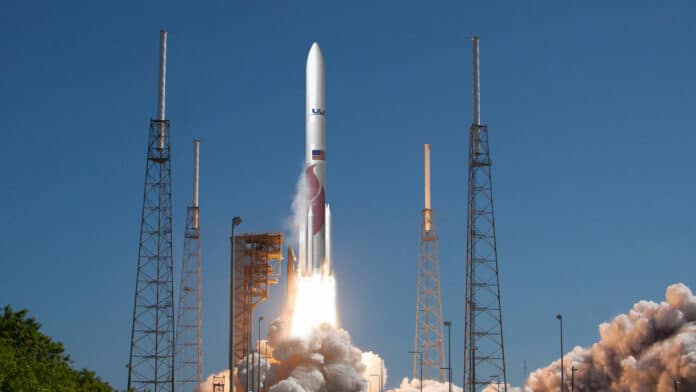Digital engineering and advanced technologies are revolutionizing the space launch industry, creating exciting opportunities and accelerating growth.
Using virtual reality and monolithic designs, meaning manufactured and cast as a single piece, Northrop Grumman’s 63-inch diameter, extended length Graphite Epoxy Motor (GEM 63XL) solid rocket booster (SRB) will make its debut today on January 8th, supporting the inaugural flight of United Launch Alliance’s (ULA) Vulcan Centaur rocket. The rocket replaces the venerable Atlas V, which was retired in October 2023.
The Vulcan Centaur is larger than both the Atlas V and Delta IV rockets and can carry heavier payloads in its 17.7-ft-wide payload fairing made of a sandwich composite structure.
The rocket’s development was not easy and faced many challenges and setbacks. One of the reasons for creating the Vulcan/Centaur was to replace the Atlas V, which used engines from Russia that became unavailable after Russia’s military intervention in Ukraine in 2022.
The 202-foot-tall (62-meter) Vulcan Centaur consists of two stages. The upper stage of the launcher is an upgraded Centaur rocket, which is fueled by liquid hydrogen and oxygen-powering RL10CX engines with fixed nozzle extensions. As for the Vulcan’s first stage uses a pair of BE-4 engines built by Blue Origin that burn liquid natural gas and oxygen and produce 1.1 million lb of thrust. The Vulcan has to carry much larger fuel tanks than the Atlas V due to the fact that natural gas is less energy-dense than hydrogen. The Vulcan/Centaur can stand as high as 221 ft (67.4 m) when carrying very large payloads.
The Vulcan incorporates Northrop Grumman’s 63-in (160-cm) diameter, extended-length Graphite Epoxy Motor (GEM 63XL) solid rocket booster (SRB) that will also be flying for the first time. Northrop Grumman claims that the 72-ft-long (22-m) fifth-generation GM 63 XL is the longest monolithic SRB ever produced for flight. While larger and longer engines have been built in sections that were bolted together, this is still quite impressive.
The Vulcan core first stage is equipped with solid boosters that are added in pairs up to six. The boosters provide additional thrust at liftoff, making it possible for the Vulcan Centaur to place payloads of up to 60,000 lb (27,200 kg) into low Earth orbit and 32,000 lb (4,500 kg) into geosynchronous transfer orbit. In fact, smaller payloads can even be placed on interplanetary trajectories and sent out of the solar system.
Today’s launch will take place at Space Launch Complex-41 at Cape Canaveral Space Force Station in Florida at 2:18 a.m. EST (07:18 GMT) on its Cert-1 mission. The launch will send the private Peregrine moon lander toward Earth’s nearest neighbor.
The Peregrine spacecraft flying via NASA’s Commercial Lunar Payload Services program is meant to support NASA’s crewed Artemis moon landings. The spacecraft carries various scientific payloads provided by NASA and other space agencies and some commercial cargo.
